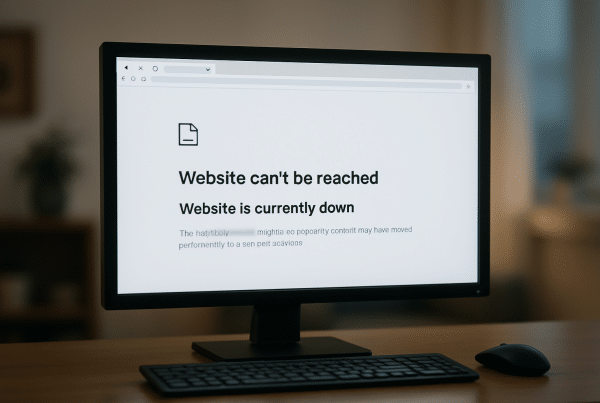One thing I realized almost a decade ago when I started to specialize in web development is that businesses will always need excellent website maintenance packages. Everything online is harshly dynamic, and it takes concerted efforts to keep a site functional and user-friendly.
I’ve seen businesses that paid for flagship website maintenance packages struggle with downtimes, bugs, and poor user experience. That should not be the case, especially after you’ve invested your hard-earned money in these services.
My experience working with hundreds of companies from diverse industries and backgrounds has shaped my idea of a perfect website maintenance package. It may have personal biases, like a preference for some security plugins or backup solutions over others, but I’m confident these components can make a huge difference.
For the avoidance of doubt, I’m focusing on WordPress maintenance plans, but these ideas also apply to other CMS platforms.
Features of an Ideal Website Maintenance Plan
1. 24/7 Security Monitoring
Website security tops this list because it’s literally a do-or-die for any website. Your site can perfectly represent your business, but one security breach can quickly erode all the trust and credibility you’ve built with customers.
You built your site to serve customers, and you’re obliged by law and ethics always to safeguard their data and privacy. You don’t want to face losses, reputation damage, lawsuits, or even criminal prosecution.
But malicious attacks can happen anytime, and the bad guys are never letting up. So, a perfect maintenance plan should have round-the-clock security monitoring, capable of detecting any form of malware intrusion or potential vulnerabilities.
Your WordPress care plan should also have proactive measures in place to prevent attacks and quickly mitigate any damages. Ensure it includes malware scanning and immediate threat mitigation.
From two-step verification to responsible, frequent password changes, the plan should map out everything reasonably possible to maintain your website’s integrity.
2. Performance Monitoring and Optimization
Nothing makes me bounce off a site faster than a slow response time. It’s frustrating, unprofessional, and inconvenient for your users. That’s why a solid website maintenance plan should include performance monitoring and optimization to keep your site running smoothly.
The company or agency handling your maintenance should include the following:
- Regular uptime monitoring to ensure your site is always accessible.
- Page speed optimization to improve user experience and search engine ranking.
- Caching mechanisms for faster loading times, especially during peak traffic periods.
- Reviewing and optimizing code, images, and other elements that may affect site performance.
Tools like Google’s PageSpeed Insights can help identify wanting metrics that could affect the general user experience.
Moreover, WordPress allows you to install various plugins to assist with performance monitoring and optimization. These plugins can help you identify any issues and provide solutions to improve your site’s speed and overall performance.
For example, various minifying plugins can reduce the size of your code, images, and other elements to make your site load faster. Caching plugins can also be beneficial in storing static versions of your site’s pages for quicker loading times.
3. Frequent Backups
Data loss can be devastating for any business, so backups are essential. Imagine if something happened and your website lost over 100 published articles or product listings. That’s a lot of hard work and valuable content gone in an instant.
My idea of a perfect website care plan includes daily or weekly backups, with the option to restore the previous site version with the touch of a button. Go for daily backups if you publish new content frequently and weekly backups for less active sites.
But valuable data extends to your customers’ information, too. If you run an eCommerce site, it’s crucial to choose a maintenance plan that includes secure offsite backups of all your customers’ data to ensure their privacy and prevent any legal liabilities.
You don’t want to have to back up your site manually, wasting precious time and exposing the process to errors. A good maintenance plan should include automated backups.
WordPress plugins like Updraft Plus allow you to automate backups, storing your data on select cloud storage services.
4. Content Updates and Relevancy
Outdated or inaccurate information can be off-putting to visitors and may even harm your reputation. Moreover, your audience won’t grow off your past, popular content unless you keep adding new information and updates.
My ideal website maintenance plan includes regular reviews of your content to ensure its accuracy and relevance. From new keywords to updated statistics, your content needs to stay current.
Update all your content, including blog posts, product descriptions, and listings. But don’t just update existing content; curate new content as well.
Use trending keywords to create new blog posts or product descriptions. Also, share industry news and updates to show your audience that you’re on top of the latest developments in your field.
Regularly updating your content also helps with search engine optimization (SEO). Search engines prioritize fresh, relevant content, so updating your website can improve its ranking and visibility.
5. Technical Support and Troubleshooting
My ideal maintenance plan also includes technical support and troubleshooting services. I know customers can waste days trying to resolve technical issues themselves, resulting in revenue and reputation losses.
But it’s not just time that wastes away during fruitless troubleshooting. Your IT team can easily get flustered, and you could even become frustrated by technical problems that seem to have no solution.
An ideal WordPress monthly maintenance package should include technical support and troubleshooting services for any issues that arise. You want a seamless user experience for your audience, and regular maintenance prevents major technical issues from occurring in the first place.
Challenges in Implementing the Perfect Website Care Plan
Maintaining a perfect website care plan requires constant attention and effort. Some of the challenges you may face include:
1. Lack of Skilled Professionals
Finding someone skilled and reliable enough to tackle all aspects of your website maintenance can be challenging. Complex web issues may require a team of experts, which can be costly for small businesses.
Moreover, most website and SEO aspects change constantly and require continuous learning and skill updating, making it a constantly evolving field.
2. Intensive Cost and Time Requirements
Creating and maintaining a comprehensive website care plan can be time-consuming and expensive. It requires constant monitoring, updates, backups, and troubleshooting, which take up significant time and resources.
Most small businesses don’t have the budget to hire a dedicated team for website maintenance, and even if they do, it may not be cost-effective.
3. Constantly Changing Tech
Innovation and technological evolution make it challenging to keep up with the latest trends and updates. Technology changes quickly, and your website must be updated regularly to stay relevant and competitive.
Continuous monitoring, learning, and implementation are needed, which can overwhelm small businesses.
4. Balancing Standardization and Customization
A perfect website care plan requires a balance between standardization and customization. While standardization can help streamline processes and make maintenance easier, it may not always meet every business’s specific needs.
On the other hand, customization can offer personalized solutions, but it also increases complexity, making maintenance more challenging.
How to Find or Create Your Perfect Web Maintenance and Care Plan
Creating a website maintenance plan that works best for your business may seem daunting, but it doesn’t have to be. Here are some steps you can follow to find or create the perfect web maintenance and care plan for your small business:
1. Assess Your Current Website Needs
The first step is to evaluate your website’s current needs, including its design, features, functionality, and content. This assessment will help you identify which areas need the most attention and which ones can be standardized or automated.
2. Identify Your Budget and Resources
Next, determine how much you can allocate to website maintenance and care. Consider financial resources and human resources.
If you have a limited budget, consider seeking cost-effective solutions, such as using website maintenance tools or outsourcing to a web maintenance service provider.
3. Research Available Options
Research and explore different website maintenance options, including tools, services, and plans offered by various providers. Consider their features, pricing, and support options before making a decision.
4. Prioritize Your Needs
Based on your assessment and available budget, prioritize which website maintenance tasks are most crucial for your business. Also, determine what you can do in-house and what requires outsourcing to a professional.
5. Customization and Flexibility
WordPress support plans vary, but it’s essential to find one that offers customization and flexibility. Your website needs may change over time, so ensure the plan can adapt to your evolving requirements.
What’s Your Perfect Website Maintenance Package?
I’ve shared my ideal web maintenance and care plan, but your needs may differ. Consider what tasks are important for your business’s success and find a package that fits those needs.
Allocate resources accordingly if it’s possible to handle some of these tasks in-house. For example, if you have a team member skilled in website maintenance and updates, it may be more cost-effective to do so.
However, don’t underestimate the value of outsourcing to a professional web maintenance service; it may provide expertise that saves you time and effort in the long run.




